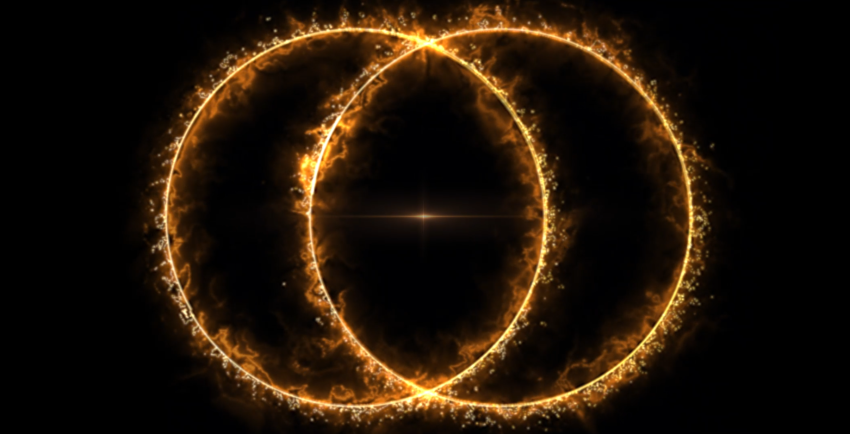
Astronomers have made a remarkable discovery involving a distant galaxy characterized by two giant, intersecting rings of radio light. Each of these rings measures approximately 300,000 light-years across. This finding emerged from the efforts of volunteers participating in the RAD@home Astronomy Collaboratory, based in Mumbai. The phenomenon is classified as an “Odd Radio Circle,” or ORC, a term that reflects its distinct nature.
These rings exist within an even larger radio cloud that spans nearly 3 million light-years. Since the identification of ORCs began just six years ago, their origins remain largely enigmatic. Researchers speculate that they may be the result of shockwaves from merging black holes or galaxies. Most ORCs detected to date are considerably larger than the Milky Way, with only a few identified so far. The newly reported ORC, designated RAD J131346.9+500320, holds the distinction of being the most distant and powerful ORC discovered thus far.
Astronomers view this ORC as it appeared when the universe was merely half its current age of 13.8 billion years, due to the time it takes for light to reach Earth. Its unique composition features two overlapping circles, a double-ring structure that has only been observed once before. Ananda Hota, founder of the RAD@home program, commented, “ORCs are among the most bizarre and beautiful cosmic structures we’ve ever seen, and they may hold vital clues about how galaxies and black holes co-evolve, hand-in-hand.”
Citizen Science at Work
The identification of RAD J131346.9+500320 represents a significant milestone in citizen-assisted astronomy. This ORC is the first to be discovered through a program involving public participation, utilizing the LOFAR network of antennas located across the Netherlands and other European countries. ORCs can only be detected via radio telescopes, and the discovery resulted from volunteers manually scanning deep space maps for unusual patterns that automated systems might overlook.
The findings have been documented in the Monthly Notices of the Royal Astronomical Society. The researchers propose that these radio rings might be formed by powerful winds emanating from specific galaxies. These winds can expel material into the far reaches of space, shaping it into the structures observed.
An accompanying animation created by the RAD@home program illustrates the expansion of the double-ring ORC following an explosive event occurring in the central galaxy. In addition to this remarkable double ring, volunteers identified two other examples of ORCs. In the case of RAD J122622.6+640622, astronomers observed a galaxy nearly 3 million light-years across, where a jet emerging from its core formed a sudden curve, resulting in a ring of radio light approximately 100,000 light-years wide.
The third instance, RAD J142004.0+621715, features a galaxy stretching 1.4 million light-years, showcasing a similar ring at the tip of one of its jets, accompanied by another narrow jet positioned on the opposite side of the host galaxy.
Implications for Cosmic Understanding
This discovery underlines the idea that galaxies can influence their environments in unexpected ways. Pratik Dabhade, a co-author from the National Centre for Nuclear Research in Poland, stated, “ORCs and radio rings are not isolated curiosities. They are part of a broader family of exotic plasma structures shaped by black hole jets, winds, and their environments.”
As research continues, these findings may illuminate the complex interactions between galaxies and black holes, providing insights into the evolution of the universe. The involvement of citizen scientists in this discovery highlights the potential of collaborative efforts in advancing astronomical knowledge.







